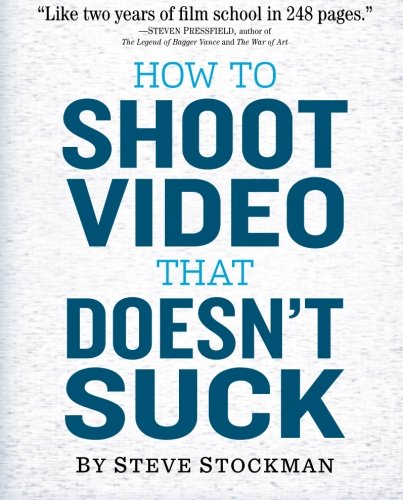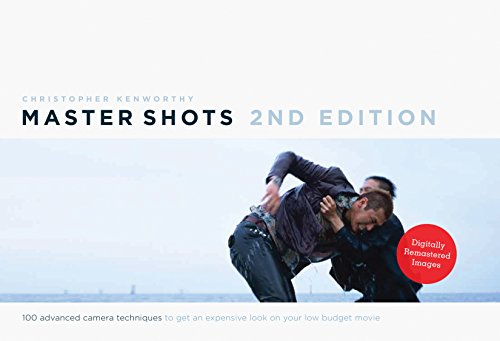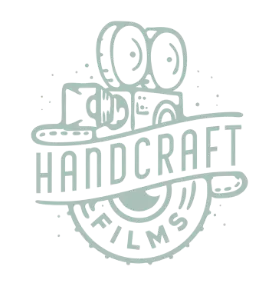Filmmakers: Recommended Reading for 2020
The new year is just around the corner, and with it comes (hopefully) a little extra downtime to brush up on some skills – whether old or new.
If you dedicate time to filling your mind with knowledge from those that inspire you, I guarantee you will see direct results in your work. Not only will you find a new spark of inspiration, but you’ll have the extra drive and motivation to make it happen. I’ve experienced this time and time again in my own creative world. If you find yourself in a slump, I highly recommend grabbing a new book and immersing yourself in some new knowledge.
I’ve rounded up a handful of my all time favorite filmmaking books to add to your collection for 2020.
Here are my favorite books all about cinematography, lighting, storytelling, and filmmaking in general.
This post does contain Amazon product recommendations. As an Amazon associate, I receive compensation for qualifying purchases, however any commission that I earn comes at no cost to you.
01. How to Shoot Video that Doesn’t Suck
As the name implies, this book cuts right to the chase. It’s a great place for filmmakers of all levels, but especially beginners and hobby filmmakers.
You’ll learn simple formulas for how to create interesting shots every time, as well as learning the basics of framing, lighting, sound, editing, and more.
It’s loaded with practical information about shooting in a variety of situations like sporting events, parties, graduations, and performances.
“How to tell a story and entertain your audience. How to shoot video people will want to watch.
Here’s how to think in shots–how to move-point-shoot-stop-repeat, instead of planting yourself in one spot and pressing “Record” for five minutes. Why never to shoot until you see the whites of your subject’s eyes. Why to “zoom” with your feet and not the lens. How to create intrigue on camera.” -the Amazon Book Review

02. Master Shots, Volumes 1-3:
- 100 Advanced Camera Techniques
- 100 Ways to Shoot Great Dialogue Scenes
- 100 Setups, Scenes, and Moves for your Breakthrough Movie
There are three volumes to this incredible resource for filmmakers. No matter what type of filmmaker you are, you can learn a lot about how to add that extra ‘cinematic’ element to your films by reading up on any of these volumes.
A great resource for sparking your creative eye when it comes to new and better ways to shoot. Includes tons of images and examples from other famous films so you can see the techniques in detail.
Absolutely a must have for any and all filmmakers that ever touch a camera.
“Master Shots gives filmmakers the techniques they need to execute complex, original shots on any budget. By using powerful master shots and well-executed moves, you can develop a strong style and stand out from the crowd.
Most low-budget movies look low-budget, because the director is forced to compromise at the last minute. Master Shots gives you so many powerful techniques that you’ll be able to respond, even under pressure, and create knock-out shots. When the clock is ticking and the light is fading, the techniques in this book can rescue your film, and make every shot look like it cost a fortune.
Every technique is illustrated with samples from great feature films and computer-generated diagrams for absolute clarity.”



03. Hillman Curtis: On Creating Short Films for the Web
I stumbled across a few short films by Hillman Curtis online a few years ago that completely blew me away.
He was a master of storytelling. Sadly he passed away several years ago, but he left a legacy of knowledge.
This is absolutely one of my all time favorite books about filmmaking, especially for anyone struggling with how to come up with new creative ideas, storytelling techniques, or how to evoke emotion through video.
“Equal parts inspiration, instruction, and personal essay, Hillman Curtis on Creating Short Films for the Web offers an intimate look into the author’s personal filmmaking process: from the ideas and influences that drive the concept and theme of the piece, through the setup, shoot, and assembly of a rough cut, to the final edit. Hillman explains how his flexible, often spontaneous filmmaking style is guided by certain principles—the value of leaving room for serendipity, the freedom found within self-imposed limitations, the importance of collaborating with others, and the possibilities for discovery and revision when reacting to unforeseen accidents.
Throughout the book, Hillman offers advice on filmmaking’s numerous elements, such as direction, sound, editing, and interviewing.”

04. The Five C’s of Cinematography: Motion Picture Filming Techniques
A great start for beginners and seasoned filmmakers alike.
This book breaks down the fundamentals but goes way, way deeper into the art of filmmaking. Check out this excerpt to get a feel for it:
“The camera angle chosen for each shot is determined by how the players and the action should be depicted at that particular moment in the narrative. Simple progression from long shot to close up may not always provide the most suitable type of sequence. For instance, subject matter or dramatic content of the story may require that the camera first record a close-up, in order to isolate, emphasize, or introduce a small object. An extreme long shot may be required to portray scope, grandeur, complexity; so that the audience fully appreciates the vastness, beauty, or conflict involved in the story. The over-all action of each sequence should be broken down before shooting and the type of shot required for each portion or the action determined in advance.
Establish the setting with a long shot, or extreme long shot – if vast in nature. Move into a medium shot to introduce the players as a group, and use close-ups for individual screen filling shots of each. Employ long shots to show the players in relation to the background, and to allow them space to move from one place to another, as the action progresses. Use medium shots, particularly two-shots, to show important inter-action between players. Utilize close-ups to emphasize a particular action, or to isolate a player or action by removing all else from view. Use extreme close-ups for full-screen shots of very small objects or actions. Progress inward as the action develops. Move back to re-establish the over-all scene, to depict new developments, to introduce a new player or allow the players to move about. As example, contrast an extreme long shot of a missile launching with an extreme close-up of the firing button! Think in terms of dramatic impact on audience as well as visual variety.”

05. Contagious: Why Things Catch On
Are you ever curious about the human mind and why people act the way that they do?
This one is especially interesting in terms of how people interact with social media, the internet, and communication as a whole. Why are we drawn to certain ideas? Why do things go viral online and what is it about them that makes us want to share that information? This concept applies to so many areas of life: general story-telling, marketing, branding, and pure curiosity.
It may appeal to many of you that would like to communicate more effectively to your audience through video storytelling.
“In Contagious, Berger reveals the secret science behind word-of-mouth and social transmission. Discover how six basic principles drive all sorts of things to become contagious, from consumer products and policy initiatives to workplace rumors and YouTube videos. Learn how a luxury steakhouse found popularity through the lowly cheesesteak, why anti-drug commercials might have actually increased drug use, and why more than 200 million consumers shared a video about one of the most boring products there is: a blender.
Contagious provides specific, actionable techniques for helping information spread—for designing messages, advertisements, and content that people will share. Whether you’re a manager at a big company, a small business owner trying to boost awareness, a politician running for office, or a health official trying to get the word out, Contagious will show you how to make your product or idea catch on.”

06. Painting with Light
In simple, non-technical language, Alton explains the job of the cinematographer and explores how lighting, camera techniques, and choice of locations determine the visual mood of film. John Alton is an Academy Award Winning cinematographer that shares in his own words exactly how to produce excellent films.

In fact, Painting With Light was the first book on cinematography written by a major Hollywood cameraman. It is one of the best and most unusual books in the field. Written with good humor and full of helpful diagrams and photographs, it is certainly entertaining. Its technological discussions are dated, but Painting With Light remains relevant because its primary focus is on light itself and the many complex ways the camera crew can manipulate it.
07. Film Directing: Shot by Shot: Visualizing from Concept to Screen
This is a great book for intermediate level filmmakers. Katz covers the number of technical options filmmakers can use to create a satisfying flow of shots, a continuity that will make sense to viewers and aptly tell the film’s story. Katz provides in-depth coverage of production design, storyboarding, spatial connections, editing, scene staging, depth of frame, camera angles, point of view, and the various types of stable compositions and moving camera shots.
As a director or cinematographer, your main job is to translate the story or theme of the film by the use of visuals. But exactly how do you do that?
This book goes into the details of how specific artistic choices will affect that story that you tell through video.

08. The Filmmaker’s Eye: Learning (and Breaking) the Rules of Cinematic Composition

This book is a great choice for visual learners. For each example shot in the book, you’ll learn a few things including:
– Why It Works: an introduction to a particular type of shot
– How It Works: callouts point out exactly how the shot works the way it does–the visual rules and technical aspects in action
– Technical Considerations: the equipment and techniques needed to get the shot.
– Breaking the Rules: examples where the “rules” are brilliant subverted
This approach allows you to understand not only why a particular shot type is usually composed in a certain way, but also how it is used to convey meaning and how to shoot it whether you are working on a feature film or a family video.
09. YouTube Secrets: The Ultimate Guide to Growing Your Following and Making Money as a Video Influencer
Here’s one for those producing youtube films. While this book doesn’t have much in the way of filmmaking specifics, it’s more about the idea of how to plan and compose videos for youtube in order to gain an audience and keep them. You can’t just make great videos in today’s world, you have to also know how to stand out from the crowd and capture your audience’s attention.
In YouTube Secrets, online video experts Sean Cannell and Benji Travis draw on a decade of experience as well as interviews with more than one hundred top creators to give you a step-by-step YouTube success playbook. You’ll learn
• The seven essential ingredients for a profitable channel
• New strategies for getting views and subscribers
• Ten ways to make money on YouTube
• And much more
This book will show you how to use YouTube to build a following, create a lucrative business, and make a massive impact in people’s lives.

10. Save the Cat: the Last Book on Screenwriting You’ll Ever Need
This is one of the most well known and well loved books for screenwriters out there, but I want to emphasize that it is valuable for any sort of filmmaker out there producing your own films – whether big or small. Having knowledge about the basics of how good stories are framed is helpful for any videographer or filmmaker out there.

This book is best known for its discussion of what is known as “beats.” Snyder created a basic formula of elements that will fit almost every story out there to tell. He even breaks the beats down to what page number they should appear in the screenplay which has lent itself to a spreadsheet called the “beat sheet” that has become essential in modern Hollywood. The beats have also been applied to TV shows, novels and other forms of fiction. There’s been a lot of the criticism of the beats as being formulaic, but it’s really just a system that fits story arcs going back to ancient mythology. Almost any story is going to have a midpoint where there are highs or lows and “bad guys closing in.”
Beyond the beat sheet, there are also tips like writing young characters to reach the widest audience, using distraction to gloss over exposition, and not making the story too complicated.
11. The Bare Bones Camera Course for Film and Video
The best place to start for complete beginners.
A timeless classic with more than 165,000 copies sold, The Bare Bones Camera Course for Film and Video has been chosen by over 700 colleges to teach basic film and video techniques. Written by a working professional, The Bare Bones Camera Course is the most user-friendly book available on the subject of film and video production; it reduces the shooting experience to its essence, making complicated concepts easy to grasp. Using simple clear language and more than 150 illustrations, the book explains:
Exposure
Lenses
Composition
Basic sequence
Crossing the line
Lighting
And much more!
When you finish this book, you will know and understand how to shoot good pictures that will edit together seamlessly in post-production. With added chapters on sound and editing, this new edition of The Bare Bones Camera Course for Film and Video rounds out the education of any filmmaker.

Share on Pinterest:

